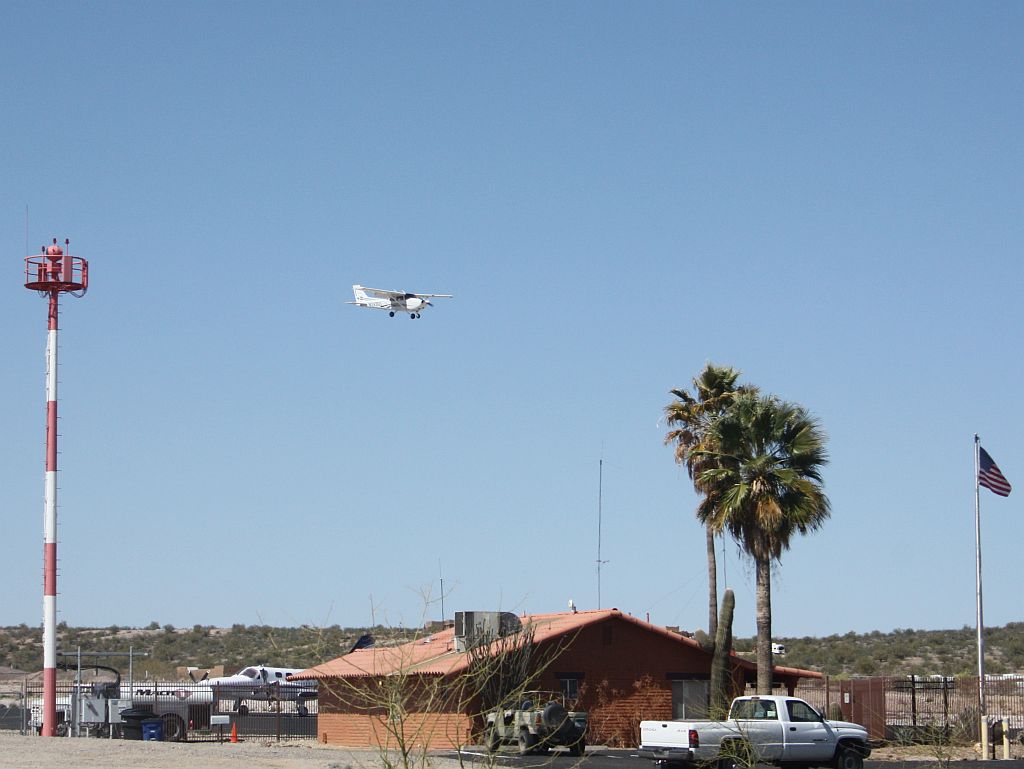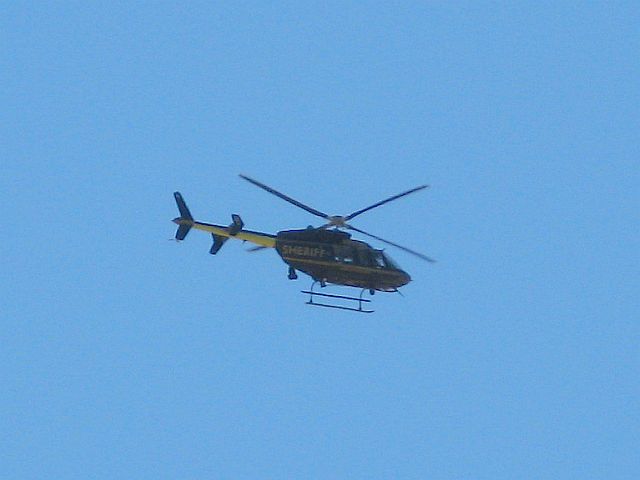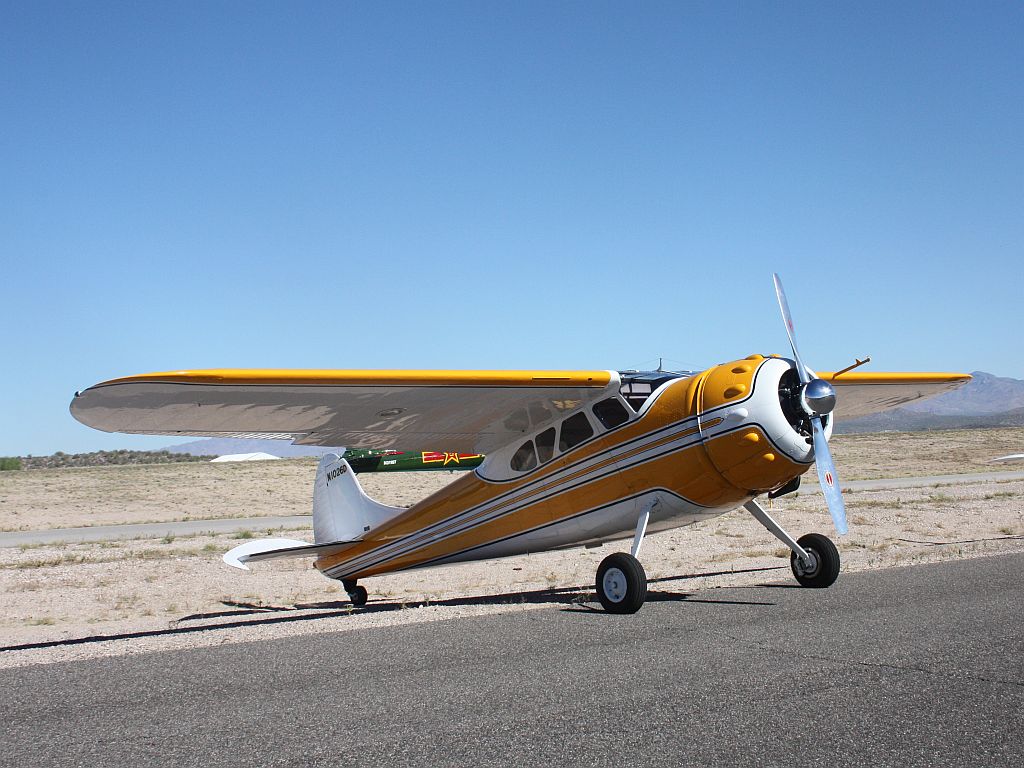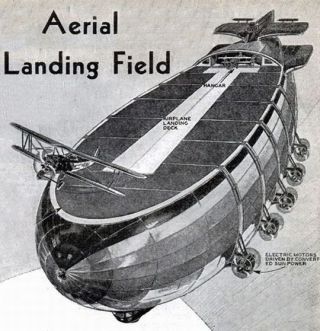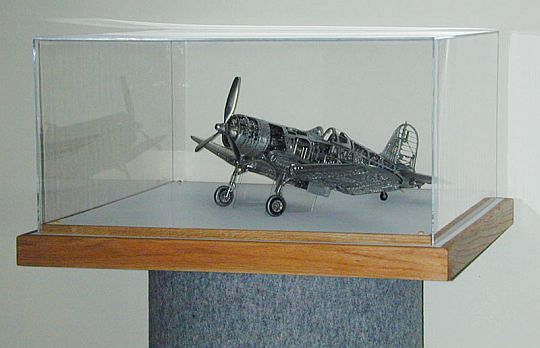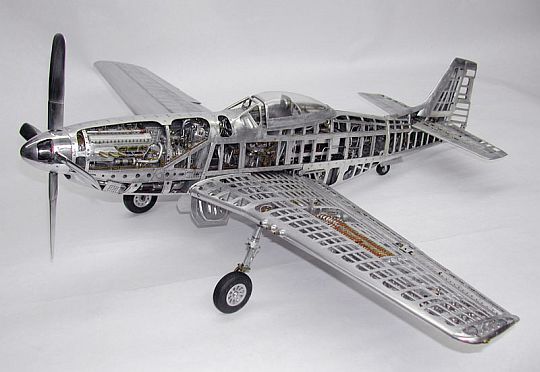Damsel and I took the dogs to the dog park today. The dog park is adjacent to Wickenburg Municipal Airport. Damsel took this shot of a Cessna 172(?) on approach for landing today. Click on the image to enlarge.
The airport is a nice little field with no control tower, but a fair amount of traffic. The runway is a bit over 6100 feet and we regularly see small jet traffic. There is flight instruction available as well as 24/7 fuel availability (self serve) with a credit card.
One of these days, Dave, my friend and former student pilot will come down from Sedona to visit and fly into this airport. Maybe I can persuade him to give me a ride in his Beechcraft Bonanza. It’s been a while, but I bet I could still grease that baby onto the runway.

